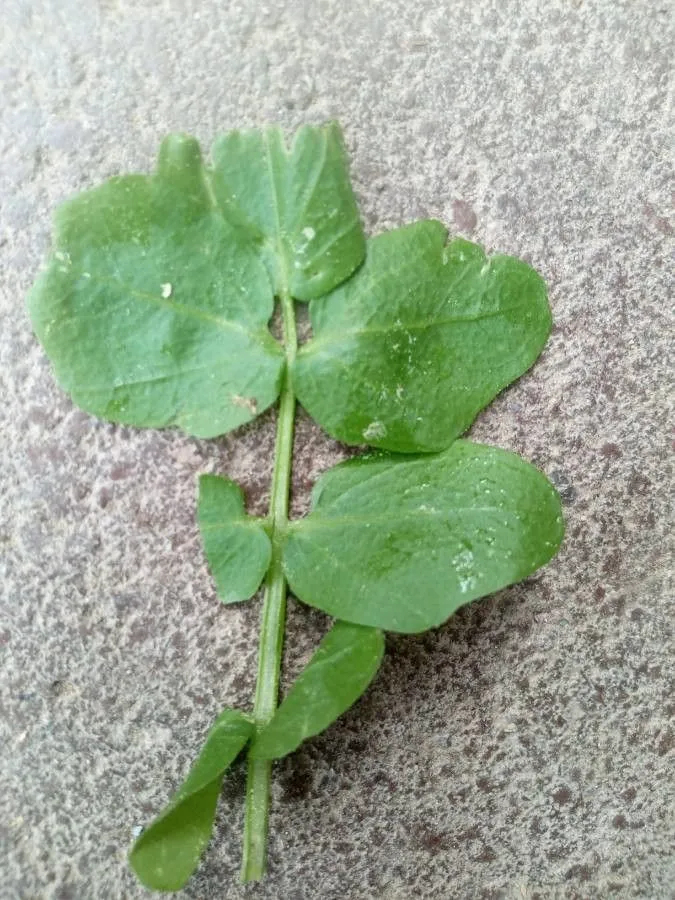
Author: (Boenn.) Rchb.
Bibliography: Icon. Fl. Germ. Helv. 1: 15 (1834)
Year: 1834
Status: accepted
Rank: species
Genus: Nasturtium
Vegetable: False
Observations: Europe to N. Pakistan, Morocco, Ethiopia, SW. Arabian Pen., Australia
Onerow yellowcress, scientifically known as Nasturtium microphyllum, is an intriguing plant belonging to the Brassicaceae family. This species is extensively distributed across various regions, spanning from Europe to Northern Pakistan, as well as countries like Morocco and Ethiopia. It is also found in the southwestern Arabian Peninsula and Australia, showcasing its adaptability and wide ecological range.
The plant was first documented in the early 19th century, with notable references appearing in the “Icon. Fl. Germ. Helv.” in 1834. The authoritative classification provided by (Boenn.) Rchb. highlights the historical significance and detailed botanical research dedicated to this species over the years.
Onerow yellowcress thrives in diverse environments, reflecting its versatile nature. This adaptability allows it to inhabit a myriad of climatic zones, from the temperate regions of Europe to the more arid landscapes of Northern Pakistan and the Arabian Peninsula. Its presence in Australia further emphasizes its resilience and ecological adaptability.
As a member of the Brassicaceae family, which includes numerous economically and ecologically important plants, Onerow yellowcress holds a unique position. Its widespread distribution and adaptability make it a subject of interest for botanists and ecologists studying plant dispersal, survival strategies, and the impact of environmental changes on plant species.
In conclusion, Nasturtium microphyllum, or Onerow yellowcress, is a noteworthy plant species with a robust presence across multiple continents. Its historical documentation and broad distribution underscore its prominence in botanical studies and highlight the vast ecological spectrum it occupies.
Deu: kleinblättrige brunnenkresse
Eng: one-row watercress, onerow yellowcress, narrow-fruited watercress, small-leaved watercress, narrow-fruit rockcress, northern watercress, one-row yellowcress
Dan: tyndskulpet brøndkarse
Swe: bäckfräne, bäckkrasse
Nno: brun engelskkarse
Nob: brun engelskkarse
Fra: cresson à petites feuilles
En: Onerow yellowcress, One-Row Watercress, Narrow-fruited Watercress, Small-leaved watercress, Narrow-fruit rockcress, Northern watercress, One-row yellowcress
Cs: Potočnice drobnolistá
Da: Tyndskulpet brøndkarse
Nl: Slanke waterkers
Fi: Pikkuvesikrassi
Fr: Cresson à petites feuilles
De: Einreihige Brunnenkresse, Kleinblättrige Brunnenkresse
Ht: Kreson
It: Crescione tetraploide
Nb: Brun engelskkarse
Nn: Brun engelskkarse
Fa: نستورتیوم میکروفیلام
Pl: Rukiew drobnolistna
Sv: Bäckfräne, Bäckkrasse
Taken Apr 29, 2020 by Elisabeth salcher (cc-by-sa)
Taken Jan 1, 1900 by EOL − Encyclopedia of Life (cc-by-nc-sa)
Taken Jan 1, 1900 by EOL − Encyclopedia of Life (cc-by-nc-sa)
Taken Jan 1, 1900 by EOL − Encyclopedia of Life (cc-by-nc-sa)
Taken Jan 1, 1900 by EOL − Encyclopedia of Life (cc-by-nc-sa)
Taken Jan 1, 1900 by EOL − Encyclopedia of Life (cc-by-nc-sa)
Taken Jan 1, 1900 by EOL − Encyclopedia of Life (cc-by-nc-sa)
Taken Jan 1, 1900 by EOL − Encyclopedia of Life (cc-by-nc-sa)
Taken Jan 1, 1900 by EOL − Encyclopedia of Life (cc-by-nc-sa)
Taken Jan 1, 1900 by EOL − Encyclopedia of Life (cc-by-nc-sa)
Taken Jan 1, 1900 by EOL − Encyclopedia of Life (cc-by-nc-sa)
© copyright of the Board of Trustees of the Royal Botanic Gardens, Kew.
Growth form: Multiple Stem
Growth habit: Forb/herb
Growth rate: Moderate
Ph maximum: 8.0
Ph minimum: 6.4
Light: 8
Atmospheric humidity: 9
Bloom months: [‘may’, ‘jun’, ‘jul’, ‘aug’, ‘sep’]
Soil nutriments: 4
Family: Myrtaceae Author: (F.Muell.) K.D.Hill & L.A.S.Johnson Bibliography: Telopea 6: 402 (1995) Year: 1995 Status:…
Family: Rubiaceae Author: Pierre ex A.Froehner Bibliography: Notizbl. Bot. Gart. Berlin-Dahlem 1: 237 (1897) Year:…
Family: Sapindaceae Author: Koidz. Bibliography: J. Coll. Sci. Imp. Univ. Tokyo 32(1): 38 (1911) Year:…
Family: Asteraceae Author: A.Gray Bibliography: Pacif. Railr. Rep.: 107 (1857) Year: 1857 Status: accepted Rank:…
Family: Fabaceae Author: Medik. Bibliography: Vorles. Churpfälz. Phys.-Ökon. Ges. 2: 398 (1787) Year: 1787 Status:…
Family: Aspleniaceae Author: (Cav.) Alston Bibliography: Bull. Misc. Inform. Kew 1932: 309 (1932) Year: 1932…